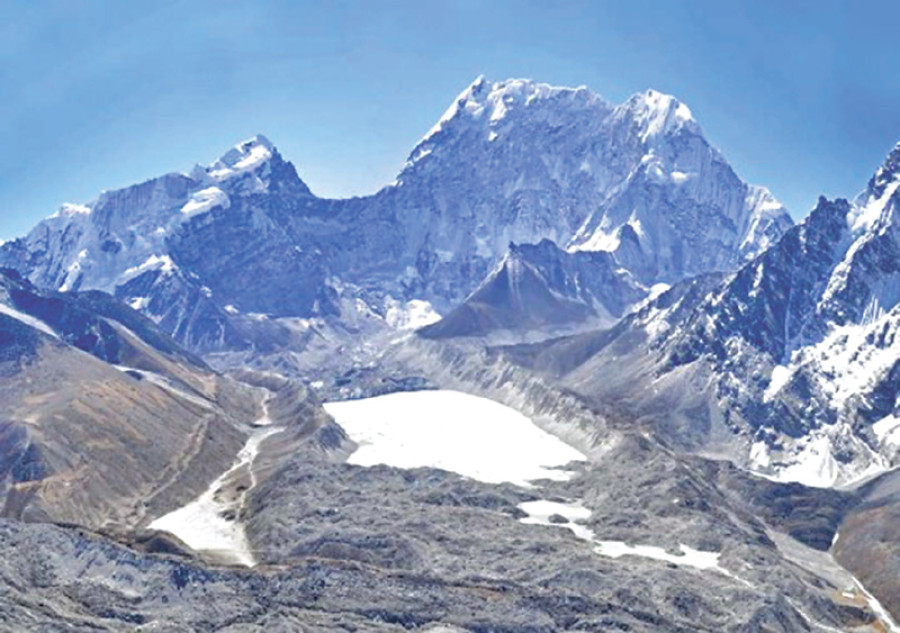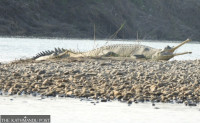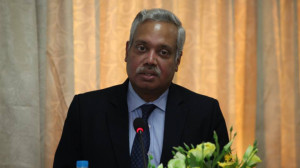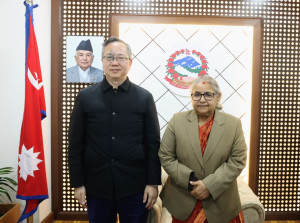National
Army airlifts equipment to drain Imja water by 3 metres
Preparations are under way to lower the water level of Imja Glacial Lake in the Khumbu region to mitigate the risk of glacial lake outburst flood (glof).
Pragati Shahi
Preparations are under way to lower the water level of Imja Glacial Lake in the Khumbu region to mitigate the risk of glacial lake outburst flood (glof). Located at an altitude of 5,010 meters above sea level, it is one of the fastest-growing and potentially dangerous glacial lakes.
As part of mitigation measure, the government has agreed to use the Nepal Army (NA) to lower the water level by three metres by October to keep it within from breaching the moraine that forms the lake’s bank.
An NA engineering team has airlifted all necessary equipment, including excavators, dozers to Imja Lake site in Solukhumbu for the purpose.
The expansion of Imja was recorded since 1950s. By some estimate, the lake has grown as much as by 2,000 percent since 50s. Experts have attributed the exponential rise in the size of the lake to climate change. The glacial lake is believed to be 149.8 metres deep with 75 million cubic metre water.
“A temporary diversion channel was constructed about three weeks ago to discharge the excess water from the lake. The team is expected to complete lowering the water level of Imja to a relatively safer limit by October this year,” said Rishi Ram Sharma, director general at the Department of Hydrology and Meteorology (DHM) on Thursday.
According to him, almost 80 percent of the construction materials and equipment have been airlifted to the site.
The DHM in technical and financial support from the United Nations Development Programme and the Global Environment Facility is implementing the $7.2 million Community Based Flood and Glacial Lake Outburst Risk Reduction Project (CFGORRP) that aims to reduce possible loss of human lives and infrastructure from a glacial lake outburst flooding in Solukhumbu and the downstream Tarai and Churia districts of Mahottari, Siraha, Saptari and Udaypur. An estimated 96,562 vulnerable people are directly in harm’s way.
“Draining the water from the lake by constructing controlled drainage is a key component of the project,” Sharma said.
Under the CFGORRP, 15 community-based early warning systems comprising manual river gauges, hand-held sirens and mikes in strategic locations along the 50-km stretch downstream of the Imja/Dudhkoshi River corridor have been constructed.
A total of 3,808 glaciers and 1466 glacial lakes have been identified in Nepal. Around 20 glacial lakes are considered potentially threatened and pose higher risks of glacial lake outburst floods due to climate change.




 10.12°C Kathmandu
10.12°C Kathmandu














